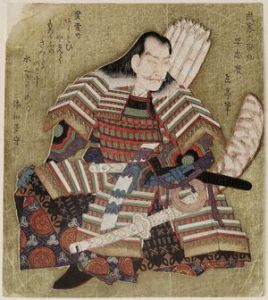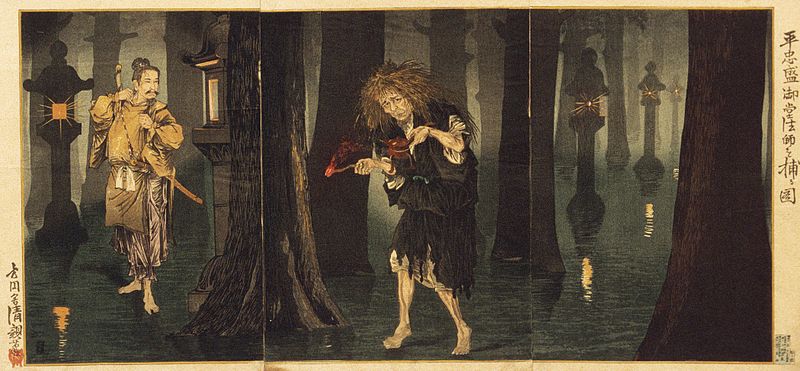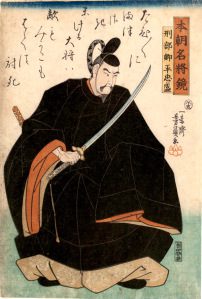Folklore and Art of Japan: Taira Clan, Samurai Tadamori, and Power Concentration
Lee Jay Walker
Modern Tokyo Times
The folklore of Japan is extremely rich and not surprisingly art, culture, fables, history, and myths focus notably on characters like Taira no Tadamori (1096-1153) in a favorable light. Tadamori tackled the world he knew based on loyalty and an unflinching belief in consolidating the power of the Taira clan. On top of this, Tadamori didn’t fear the underworld that was extremely potent in this period of history. Therefore, this famous individual in Japanese history is highly respected based on many powerful factors.
In another article I stress “Tadamori played a powerful role in the consolidation of the Taira clan, therefore, his importance within the Imperial Court during this period of history was clearly noticed. His loyalty to the Taira clan and the Imperial Court went hand-in-hand. Indeed, Tadamori’s bravery and loyalty held no bounds because he was a staunch role model. This reality also highlights the inner-strength of the Taira clan in this period of Japanese history.”
Tadamori, just like Oda Nobunaga (1534-1582) and other powerful leaders, had to tackle the power of warrior Buddhist monks. It must be remembered that during this period of history internal regional power and central power concentration was extremely complex. After all, local power bases were extremely powerful within limited boundaries and various religious orders, irrespective if Buddhist in Japan or Christian in Europe – had different ideas about controlling society, and preserving respective privileges. Therefore, in Japan, the warrior Buddhist monks were often deemed problematic in various periods of Japanese history because of the military role they held.
The Buddhist warrior monks of Mount Hiei, therefore, became a serious challenge to the power base of the Taira clan. Nobunaga, many centuries later also understood this menace. Given this reality, Tadamori would clash heavily with the Buddhist warrior monks of Mount Hiei and Nara.
Piracy was another major problem for the Taira clan and even in parts of the world today this reality remains, notably in coastal areas of Somalia and in parts of the Southern Philippines. This reality meant that Tadamori launched potent military campaigns on the coasts of Nankaido and San’yodo. Not surprisingly, the Taira elites were extremely impressed by the role Tadamori played in tackling piracy. Similarly, this powerful samurai warrior was respected for his rich cultural knowledge and how he fused this with power concentration and power consolidation.
In time, the prestige of Tadamori grew long after his death. After all, in this period of Japanese history Buddhism, Shintoism, local folklore, superstition and the traits held by Tadamori appealed greatly from many different angles. This reality means that the cultural, historical and political legacy of Tadamori became fused with the richness of Japanese folklore. Therefore, in the area of art alone, Tadmori is depicted in a historical light and within the mysteries of the underworld where he fights demons.
Not surprisingly, Tadamori is depicted in art, literature, Japanese folklore and Kabuki plays. Indeed, from a cultural point of view Tadamori is deemed highly and clearly his rich legacy remains powerful in modern day Japan.
More Information about TOSHIDAMA GALLERY
Please visit http://toshidama.wordpress.com and http://toshidama.blogspot.jp/ for more articles and information.
Please visit http://toshidama-japanese-prints.com/ On our site you will see a wonderful selection of Japanese woodblock prints for sale. Ukiyo-e (the Japanese name for woodblock prints of the 18th and 19th centuries) are beautiful, collectible and a sound financial investment.
Modern Tokyo News is part of the Modern Tokyo Times group
DONATIONS to SUPPORT MODERN TOKYO TIMES – please pay PayPal and DONATE to sawakoart@gmail.com
http://moderntokyotimes.com Modern Tokyo Times – International News and Japan News
http://sawandjay.com Modern Tokyo Times – Fashion
https://moderntokyonews.com Modern Tokyo News – Tokyo News and International News
http://global-security-news.com Global Security News – Geopolitics and Terrorism
PLEASE JOIN ON TWITTER
https://twitter.com/MTT_News Modern Tokyo Times
PLEASE JOIN ON FACEBOOK
https://www.facebook.com/moderntokyotimes
Some Japanese art and cultural articles by Modern Tokyo Times are republished in order to inform our growing international readership about the unique reality of Japan.




